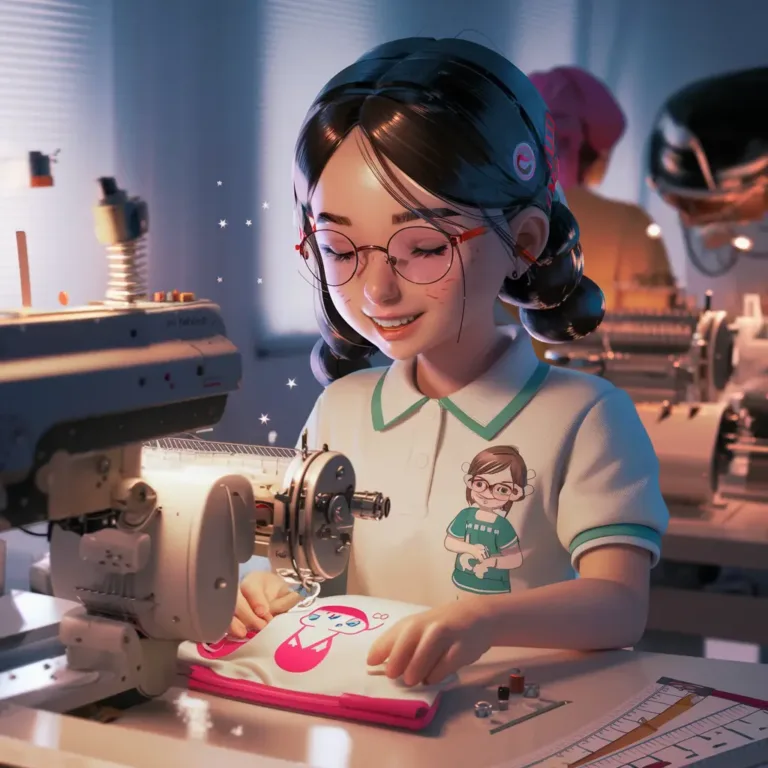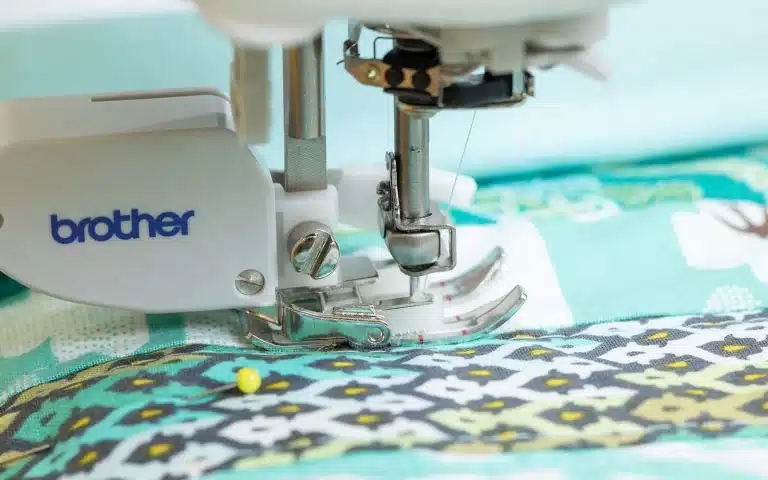Stitch Your Way to Success: A Guide to Becoming an Embroidery Digitizer
The world of embroidery is a beautiful tapestry woven with vibrant colors and intricate designs. But before those threads hit the fabric, there’s a crucial step – transforming artwork into instructions an embroidery machine understands. This is the domain of the embroidery digitizer, a skilled professional who breathes life into designs for stitching.
If you’re captivated by the idea of transforming artwork into embroidered masterpieces, this guide is for you! We’ll delve into the exciting world of embroidery digitizing, exploring the necessary skills, the learning path, and the tools to set you on your stitching journey.
Why Become an Embroidery Digitizer?
Embroidery digitizing offers a unique blend of creativity and technical expertise. You get to:
- Be a creative translator: Take an idea and translate it into a language embroidery machines understand.
- Embrace precision: Digitizing requires meticulous attention to detail, ensuring every stitch falls into place perfectly.
- See your designs come to life: The satisfaction of witnessing your digitized artwork transformed into a tangible embroidered piece is unmatched.
- Work on a variety of projects: From intricate logos to playful children’s designs, digitizers work on a diverse range of projects.
- Enjoy potential for flexibility: Freelance digitizing allows you to set your own hours and work from the comfort of your home.
The Skills You Need to Master
- Software Proficiency: Embroidery digitizing software is your primary tool. Popular options include Wilcom, Hatch, and PES. While the specific features may differ, the core principles remain consistent.
- Understanding Embroidery Techniques: Knowledge of stitch types, thread properties, and hoop limitations is essential. You need to know how to translate an image into efficient and beautiful stitches.
- Graphic Design Fundamentals: A basic grasp of design principles like color theory, composition, and file formats will significantly enhance your digitizing process.
- Keen Eye for Detail: A meticulous approach is crucial to ensure stitches are placed accurately and potential errors are caught before they become problems.
- Patience and Practice: Digitizing is a skill that takes time and dedication to master. Be prepared to invest effort and refine your craft through practice.
Learning Paths to Embark On
There’s no one-size-fits-all approach to becoming an embroidery digitizer. Here are the prominent learning avenues:
- Online Courses: Several online platforms offer comprehensive digitizing courses. These courses provide structured learning with video tutorials, downloadable resources, and opportunities to practice and receive feedback.
- Software Tutorials: Most embroidery digitizing software comes with built-in tutorials and comprehensive user guides. These resources are a great starting point to familiarize yourself with the software’s functionalities.
- Books and eBooks: Several publications delve into the intricacies of embroidery digitizing. These resources offer detailed explanations and visual aids to supplement your learning.
- Apprenticeship: If you’re fortunate enough to find an established digitizer willing to take you under their wing, an apprenticeship can provide invaluable practical experience and mentorship.
The Tools of the Trade
Your embroidery digitizing journey requires some essential tools:
- Computer with Adequate Specs: Digitizing software can be resource-intensive. Ensure your computer has sufficient processing power and memory to run the software smoothly.
- Embroidery Digitizing Software: Choose a reputable software program that caters to your needs and budget. Many offer trial versions to help you test the waters before committing.
- Embroidery Machine (Optional): While not essential for learning, having an embroidery machine at your disposal allows you to test your digitizations and gain a deeper understanding of the embroidery process.
- Digital Design Resources: A library of digital artwork serves as your source material for practice. Many websites offer free or paid embroidery designs.
Sharpening Your Skills: Practice Makes Perfect
Once you’ve grasped the fundamentals, it’s time to refine your skills. Here are some effective practice methods:
- Start Simple: Begin with basic shapes and lettering before progressing to more complex designs.
- Practice with Free Designs: Many websites offer free, downloadable embroidery designs specifically for practice purposes.
- Join Online Communities: Connect with other digitizers online. Share your work, ask questions, and learn from others’ experiences.
- Digitize for Others: Offer your digitizing services to friends, family, or local businesses at a discounted rate to build your portfolio and gain practical experience.

Building a Successful Career Path
- In-House Digitizer: Join an embroidery company and work as part of their design team, creating digitizations for in-house production.
- Embroidery Educator: Share your knowledge by teaching embroidery digitizing courses online or in person.
- Software Specialist: Work with a digitizing software company, providing technical support or developing training materials.
Building Your Brand and Attracting Clients
For freelance digitizers, establishing a strong online presence is crucial. Here are some tips:
- Create a Portfolio Website: Showcase your best work with high-quality images and detailed descriptions of the digitizing techniques used.
- Develop a Social Media Presence: Connect with potential clients on platforms like Instagram and Pinterest. Share your work, showcase behind-the-scenes glimpses, and offer valuable embroidery digitizing tips.
- Offer Competitive Rates: Research the going rates for digitizing services and establish pricing that reflects your experience and skill level.
- Provide Excellent Customer Service: Be responsive to inquiries, communicate clearly, and deliver high-quality work on time.
The Embroidery Digitizing Landscape: Trends and Considerations
As the embroidery industry evolves, staying up-to-date with trends is essential:
- Rise of 3D Embroidery: Techniques like puff embroidery and applique are gaining popularity, requiring advanced digitizing skills.
- Increased Demand for Customization: Consumers are increasingly seeking personalized items. Be prepared to digitize logos, monograms, and other custom designs.
- Technological Advancements: Digitizing software is constantly evolving, offering new features and functionalities. Embrace these advancements to enhance your efficiency and skillset.
The Rewarding World of Embroidery Digitizing
Embroidery digitizing is a unique and rewarding career path. It allows you to blend creativity with technical expertise, transforming ideas into beautiful embroidered creations. With dedication, practice, and a passion for all things stitched, you can carve your niche in this vibrant industry.
Bonus Tips:
- Never stop learning: The world of embroidery digitizing is ever-evolving. Stay curious, explore new techniques, and attend industry workshops or conferences to keep your skills sharp.
- Invest in quality resources: Consider purchasing embroidery threads and stabilizer to test your digitizations on physical fabrics. This will help you refine stitch types and densities for optimal results.
- Build relationships with embroiderers: Collaborate with embroidery machine operators to gain valuable insights into the practical aspects of embroidery and potential challenges your digitizations might encounter.
Embark on your embroidery digitizing journey today, and watch your creativity come alive, stitch by beautiful stitch!
Related Posts
Discover relevant articles, tutorials, and tips to improve your skills and explore new techniques.
Stay inspired and connected to our embroidery community.






